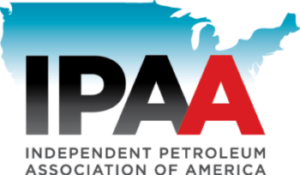
Mar 7, 2017 Opinion: 2017, A Year for America’s Energy Resurgence (The Hill)
“The Trump administration and Congress have an opportunity to foster a new resurgence in energy development and support the thousands of small businesses and millions of workers that comprise this vital American industry.”

2017: A Year for America’s Energy Resurgence
By Barry Russell, IPAA President and CEO
The Hill Op-Ed
Tuesday, March 7, 2017
Over the past decade, the U.S. oil and natural gas industry has capitalized on new opportunities while navigating unchartered challenges. The shale revolution provided previously inaccessible, affordable energy for American consumers, yet duplicative federal regulations imposed new costs and delays. Producers and service companies continued to look for new ways to innovate and cut costs in the face of a dramatic downturn in commodity prices stemming from shifts in global markets.
These regulatory and market realities are nothing new for this century-old industry but, with new leadership in Washington and markets rebounding, it is time to move forward.
The Trump administration and Congress have an opportunity to foster a new resurgence in energy development and support the thousands of small businesses and millions of workers that comprise this vital American industry. Independent oil and natural gas companies develop 90 percent of American wells, accounting for 54 percent of oil production and 85 percent of natural gas. Nearly two-thirds of independent producers are small businesses, employing an average of only 12 full-time employees. Collectively, these companies support over 2 million American jobs, boosting the economy and providing critical tax revenue for local, state, and federal coffers.
These jobs and businesses are a key part of the U.S. economy. As America faced immense economic difficulty during the 2008 financial crisis, the shale revolution played a vital role in the nation’s recovery. Consulting firm IHS CERA estimates that from 2008 to 2013, the industry’s economic output was directly responsible for nearly 1 percent of U.S. GDP annually over those six years — contributing nearly 40 percent of overall GDP growth in that time. Meanwhile, the Energy Information Administration reports net oil imports dropped from 60 percent of products supplied in 2005 to 27 percent just ten years later. These developments not only support the U.S. economy, but enhance our national security and promote independence from foreign sources of energy.
Yet despite these extraordinary statistics, new challenges have emerged over the past two years. Difficult market conditions and a drop in oil prices led to a reduction in high-paying manufacturing jobs. Many companies were forced to service debt repayments rather than invest in new projects, while others entered bankruptcy to move forward. But this difficult time also brought about new efficiencies and innovation to apply in the future. Today, recovery is happening, with prices stabilizing in recent months and many companies planning to increase 2017 capital expenditures by 50 percent or more.
This is great news for American workers, but there is still more to be done. Today, the oil and natural gas industry faces a federal regulatory framework that is complex, extensive and growing. Federal regulators have overstepped their role and infringed on the traditional model of state-centered decision making by implementing duplicative regulatory burdens on the thousands of small business independent producers.
The new Congress and administration have an opportunity to re-empower the states and rely on local expertise when forming regulatory policies. Just like the men and women who work for the industry, state regulators live in the communities they regulate, care about the environment and economy, and understand the unique aspects of local challenges.
Certain regulations must also be reassessed and updated to better reflect operations on the ground. Both the White House and leaders on Capitol Hill have already committed to certain areas of reform that are promising, including efforts to modernize the Endangered Species Act to focus on the actual conservation of species, not the politicizing of land development. Updates to simplify the U.S. tax code also provide new opportunities, but reform must be approached in a way that supports capital investments – not simply reform for the sake of reform. Critical energy tax provisions, such as the Intangible Drilling Cost deduction, stimulate investment in safe American energy production. Removing these provisions could wipe out 25 percent of future investment – an act that stands in opposition to the public’s call for more jobs, economic opportunity, and security.
The oil and natural gas industry fuels America’s economy. This industry is made up of thousands of small businesses, employs millions of workers with good paying, manufacturing jobs, all while providing the energy we all rely upon and keeping our environment safe. Now Congress and the Administration must determine a path forward to make 2017 the year of American energy.
Barry Russell is the President and CEO of the Independent Petroleum Association of America, the leading, national upstream trade association representing oil and natural gas producers that drill 90 percent of the nation’s oil and natural gas wells. These companies account for 54 percent of America’s oil production, 85 percent of its natural gas production, and support more than 2.1 million American jobs. Learn more about IPAA by visiting www.ipaa.org and following @IPAAaccess on Twitter.






